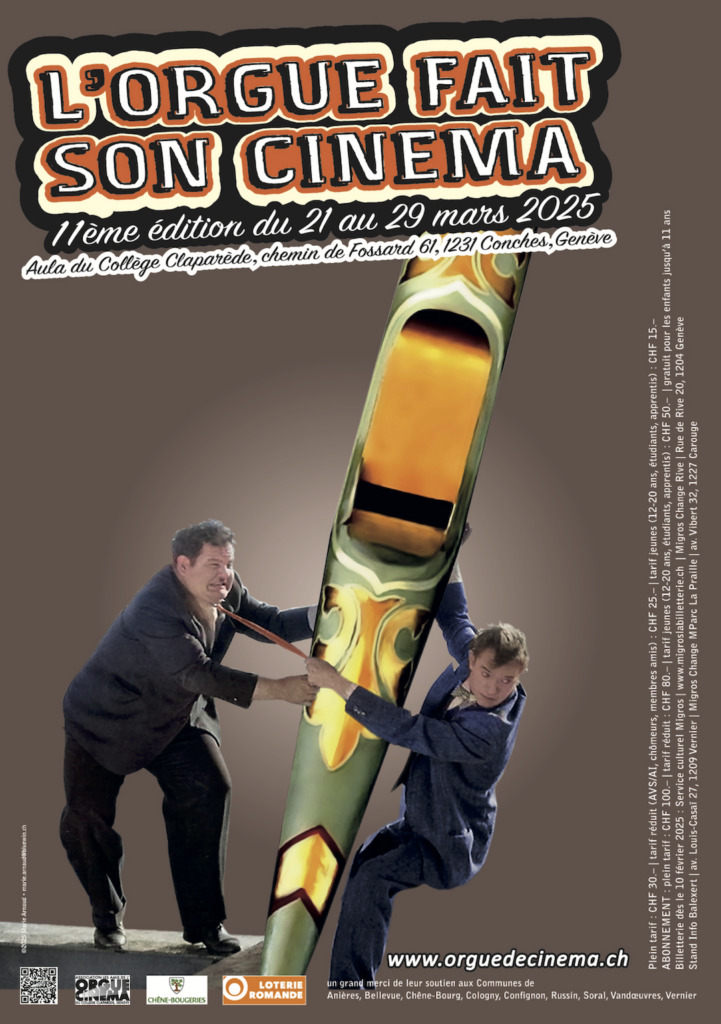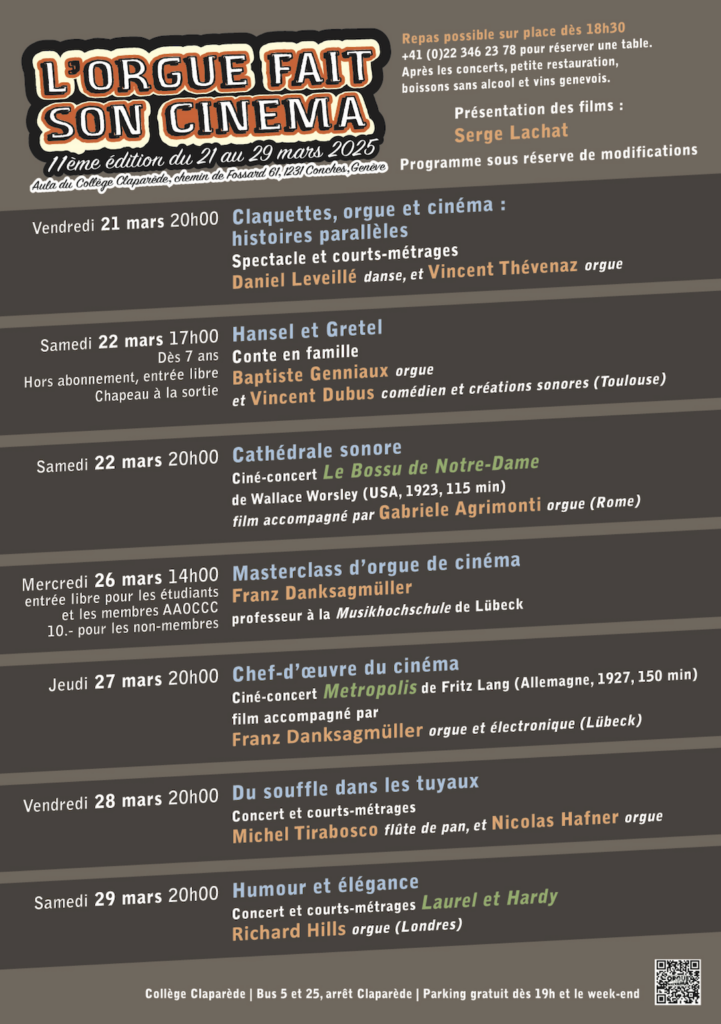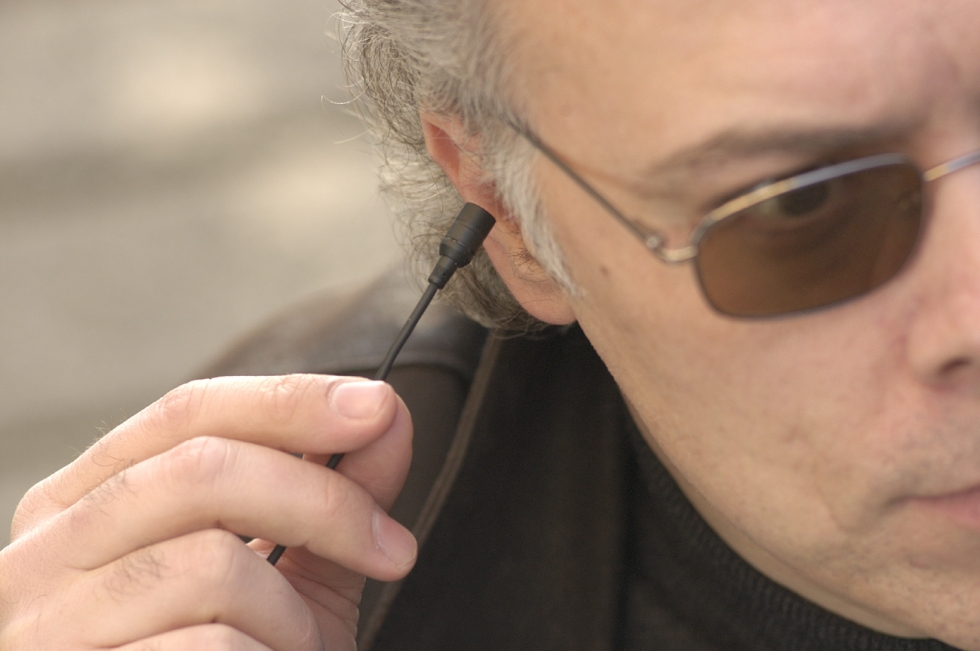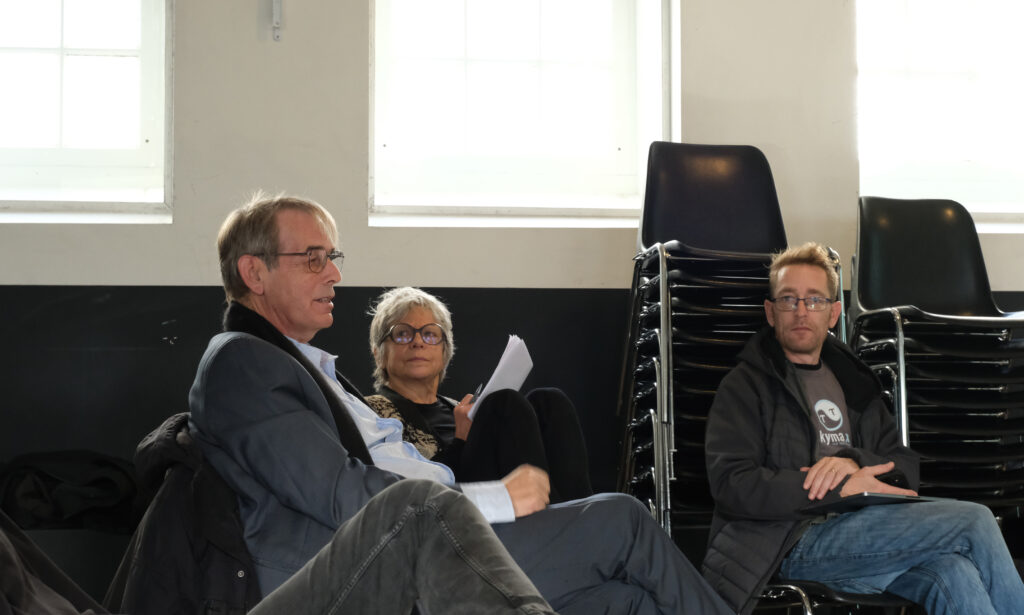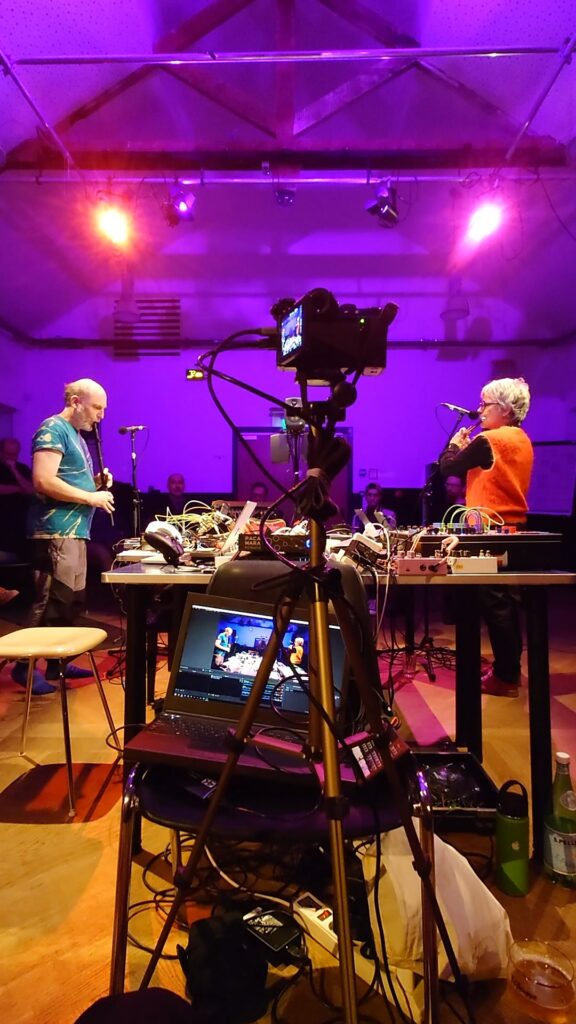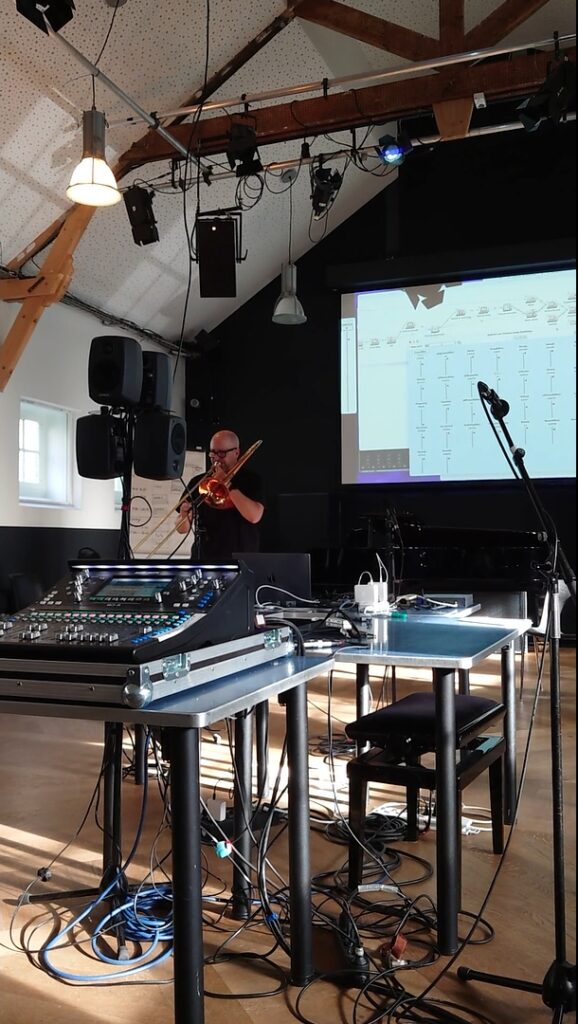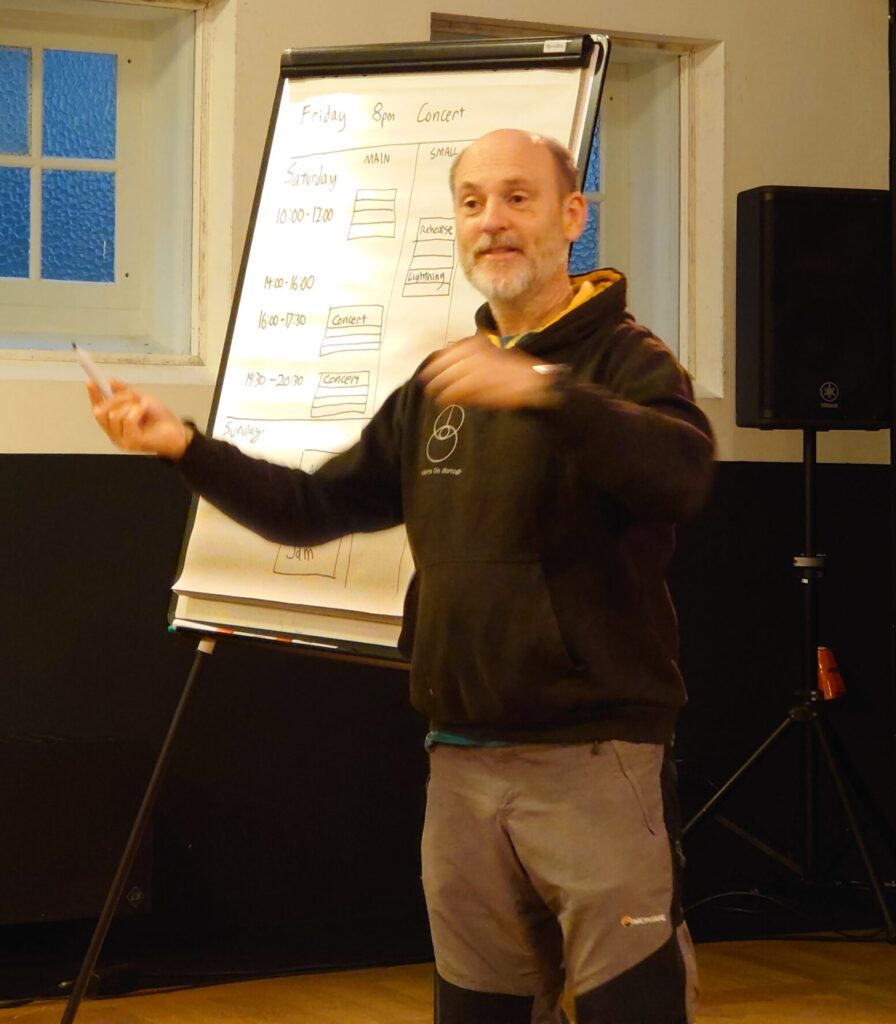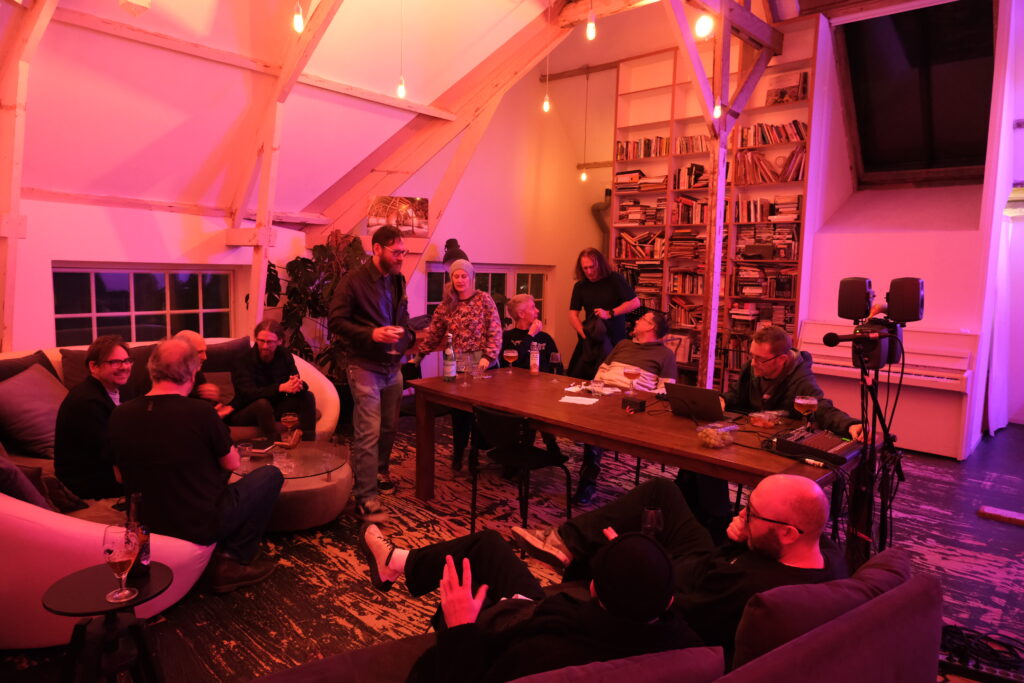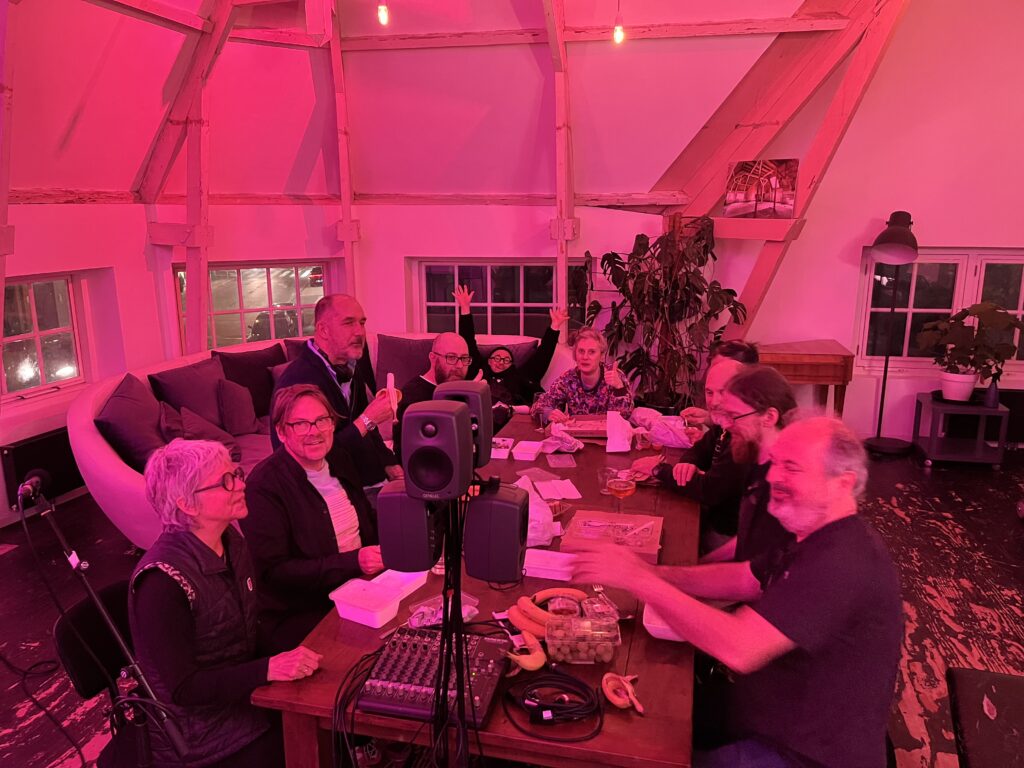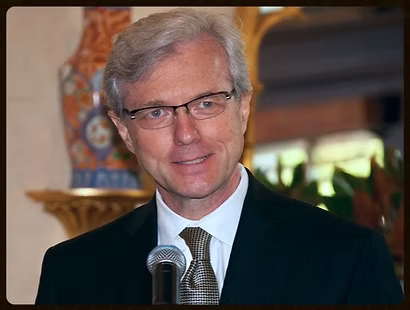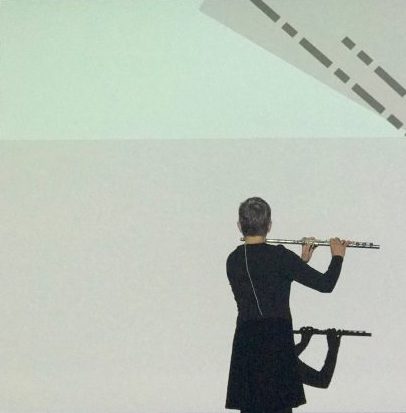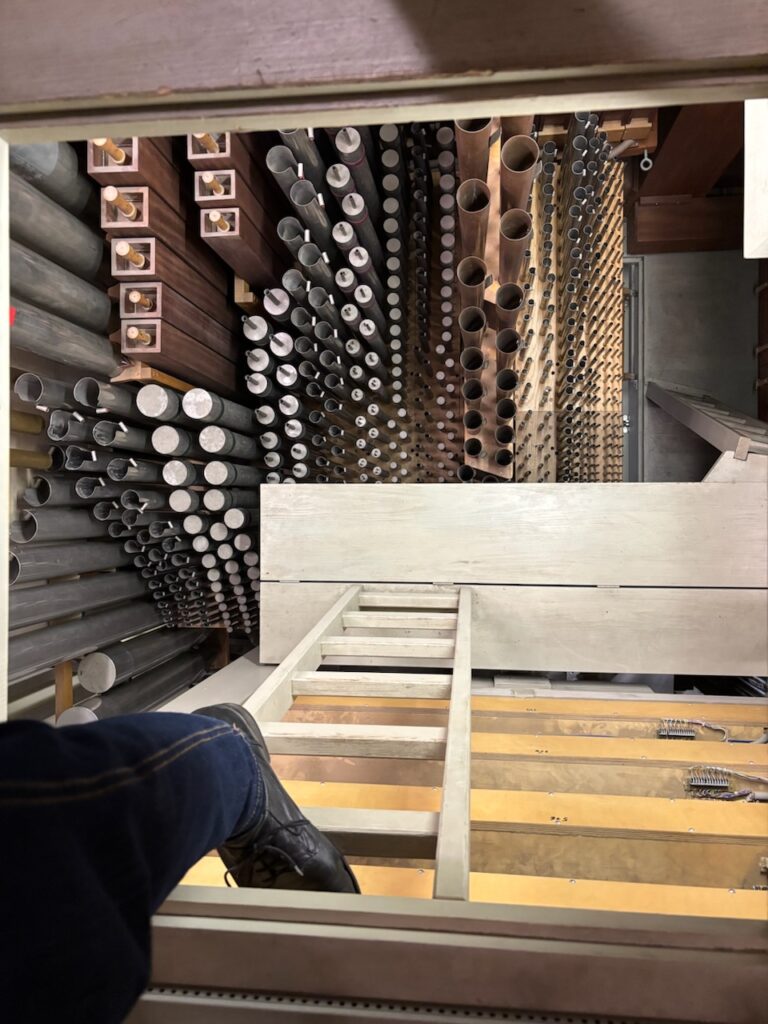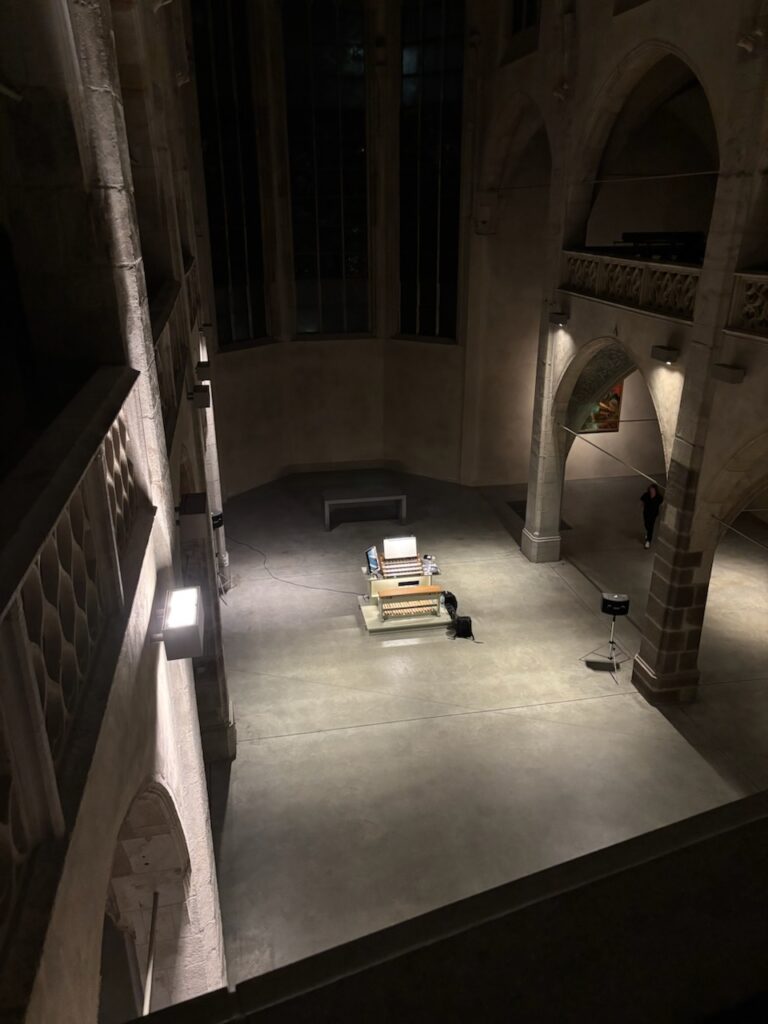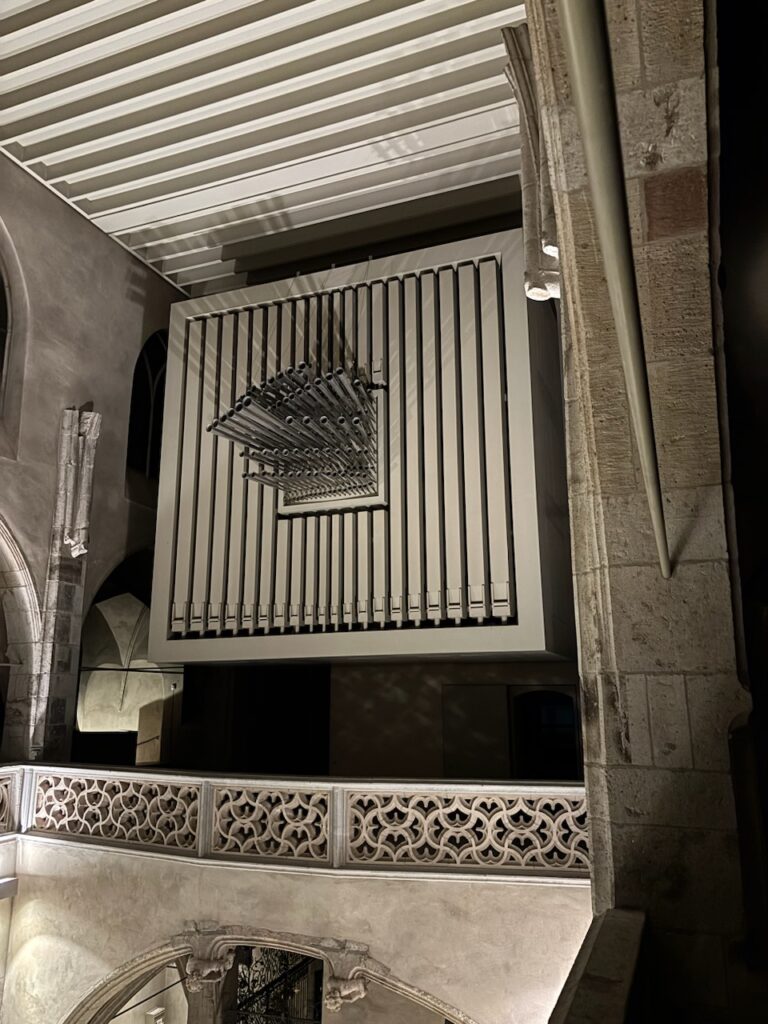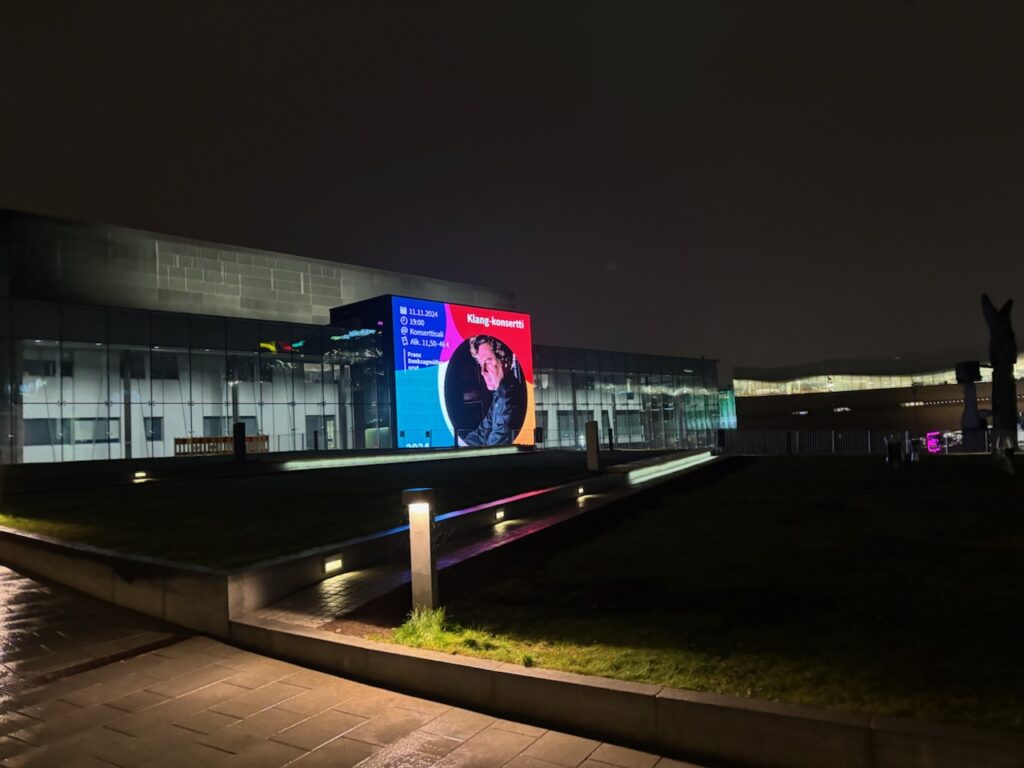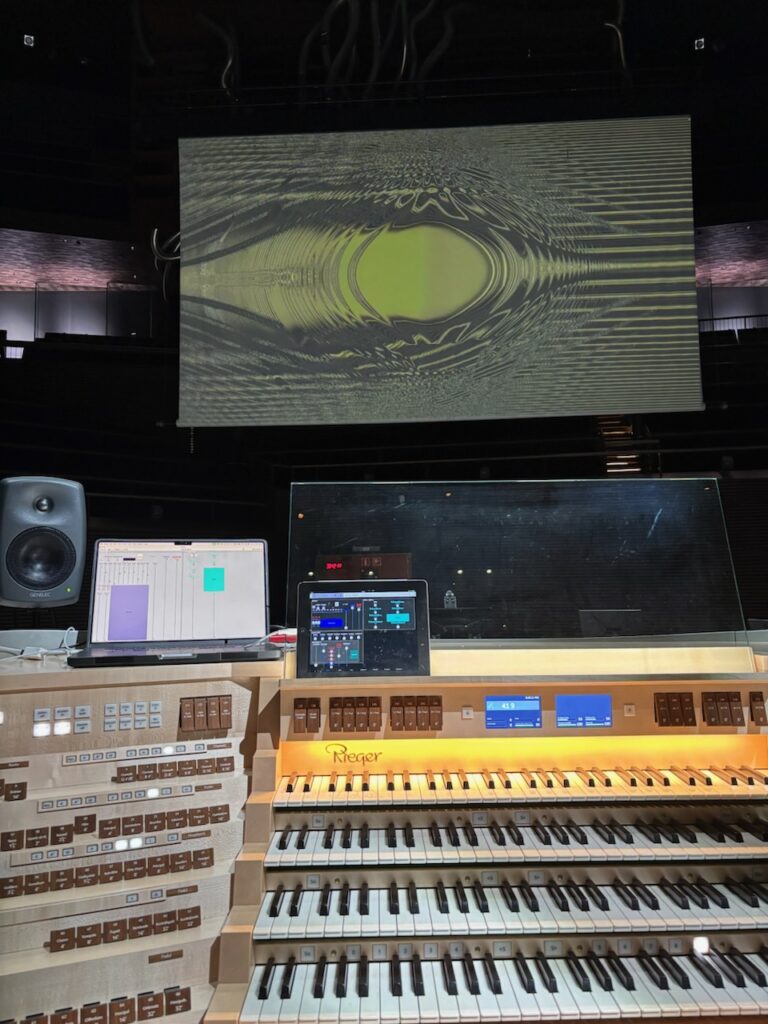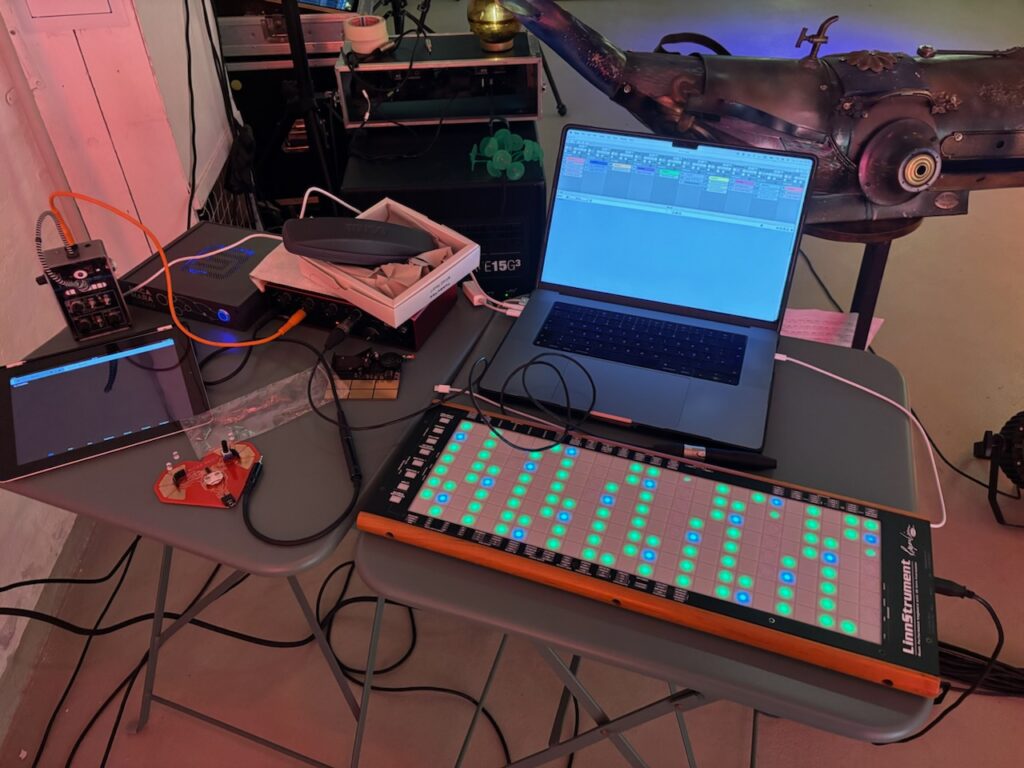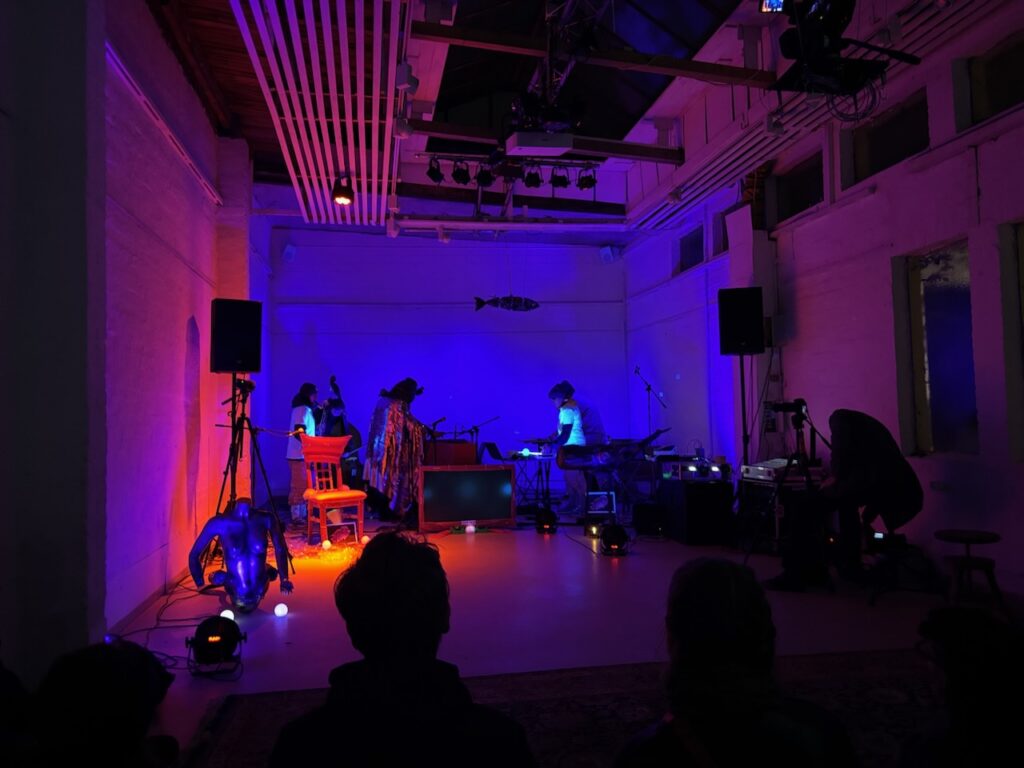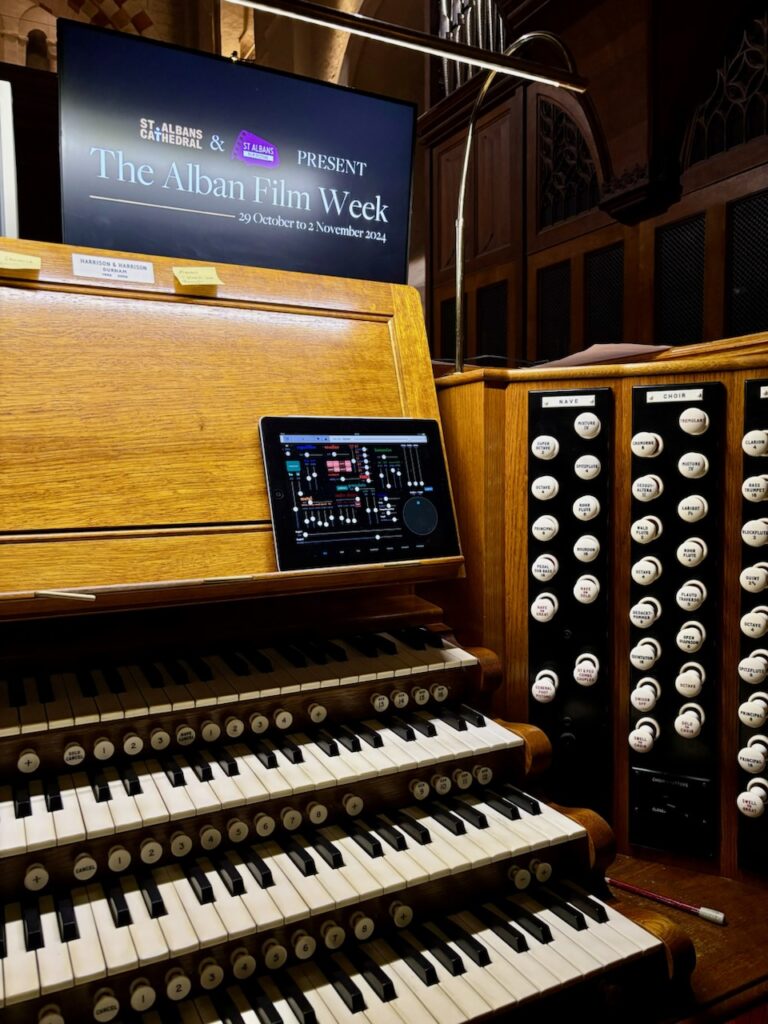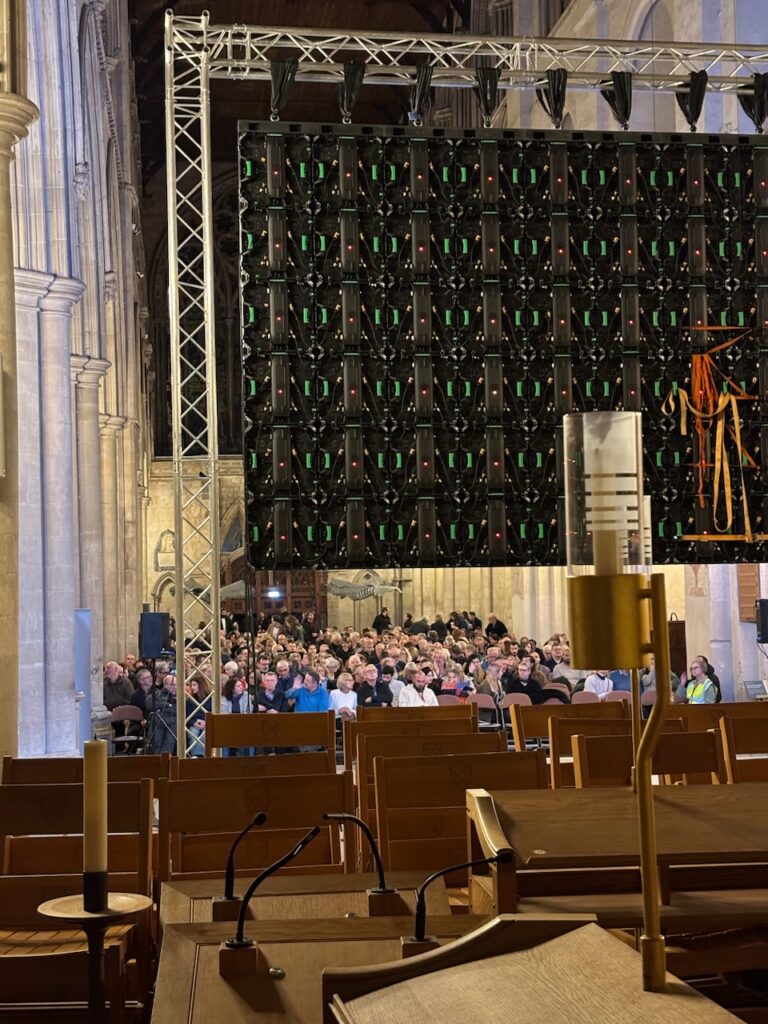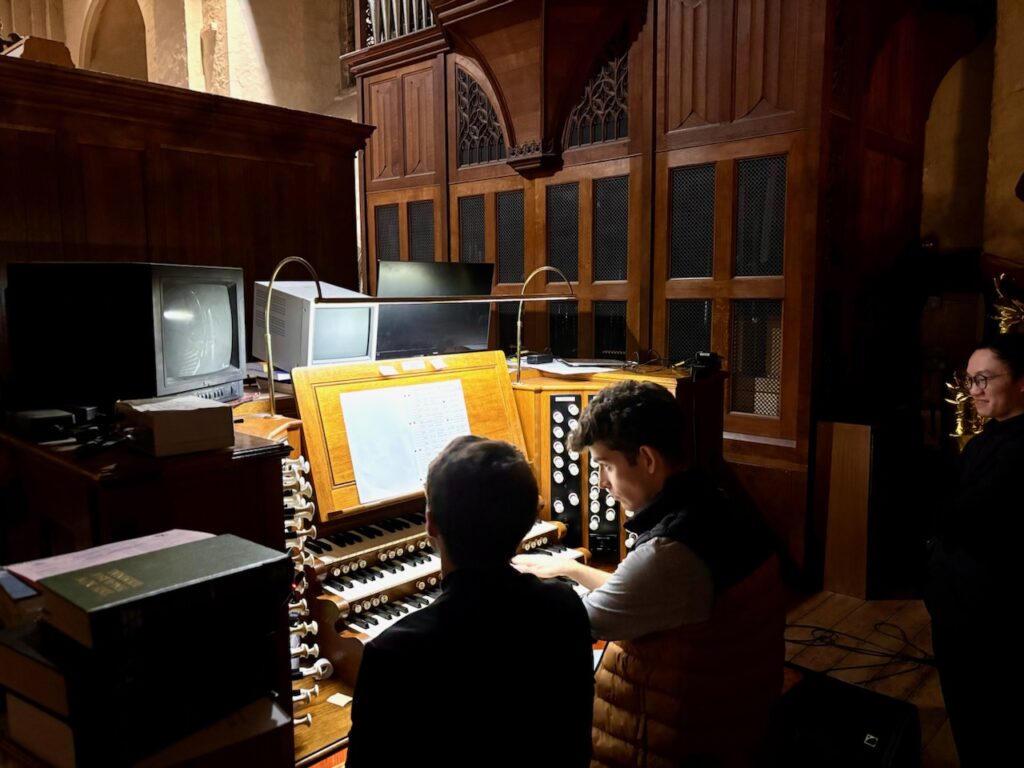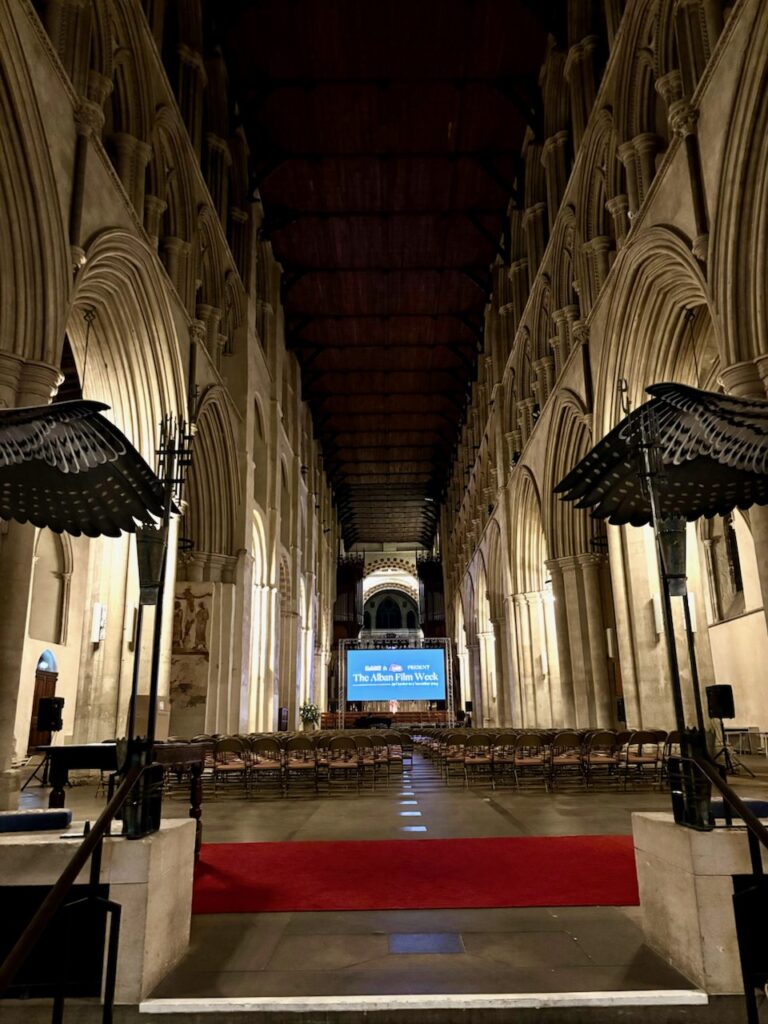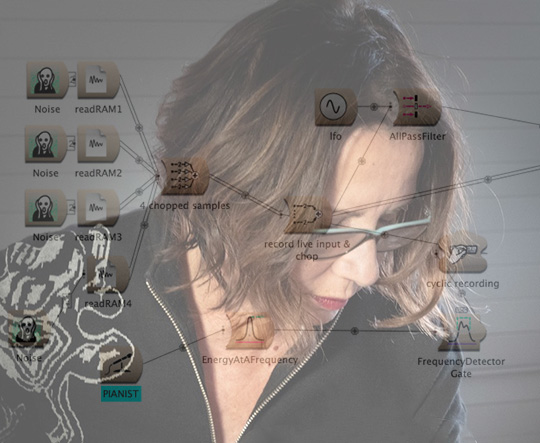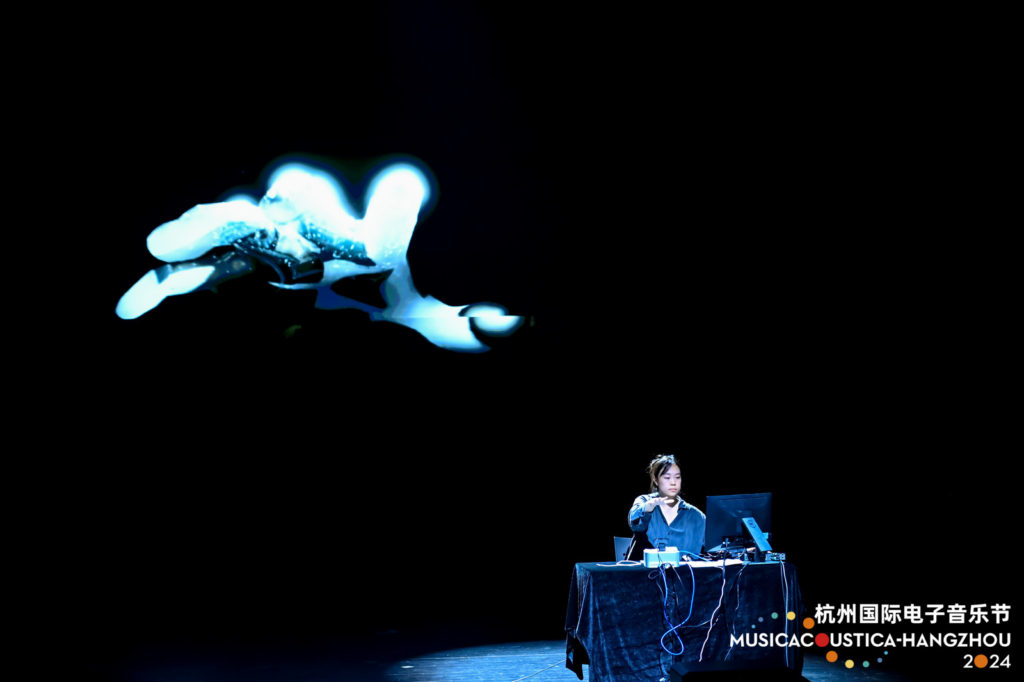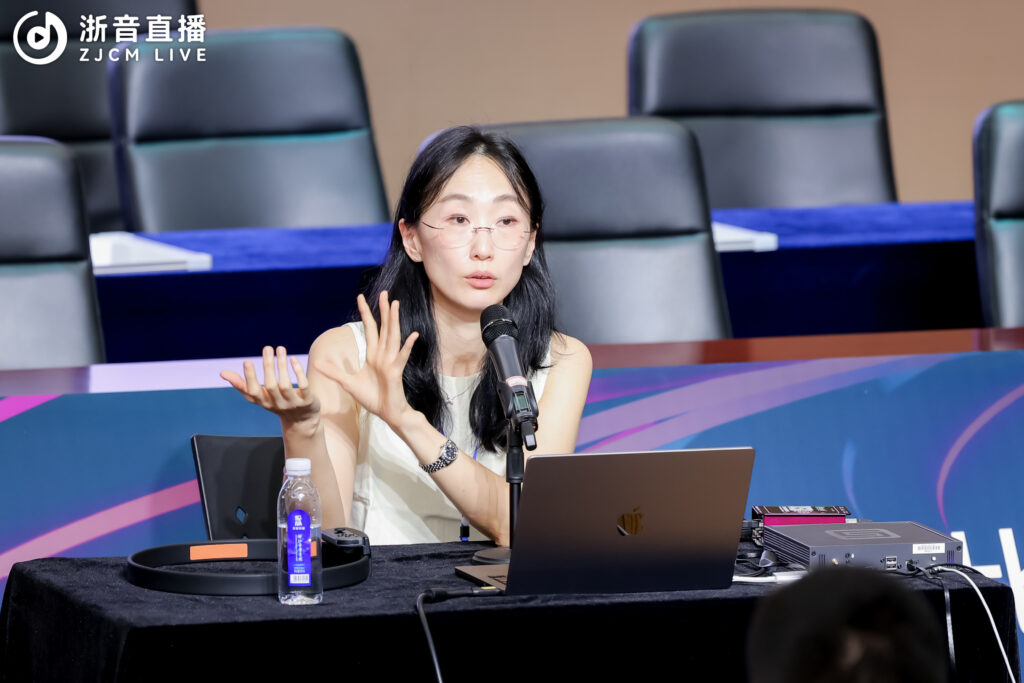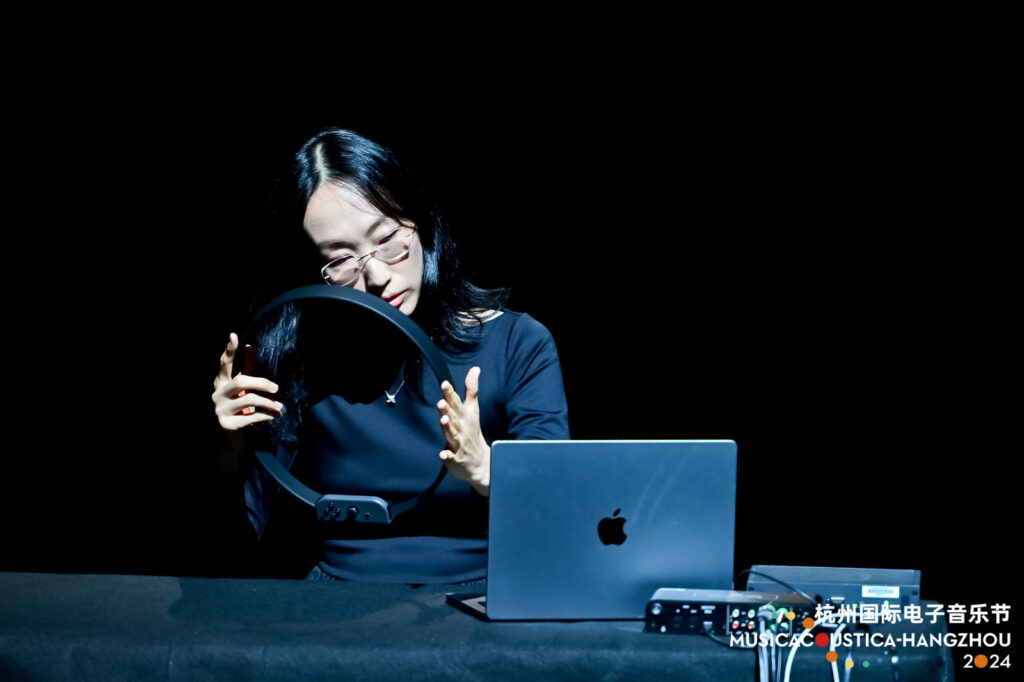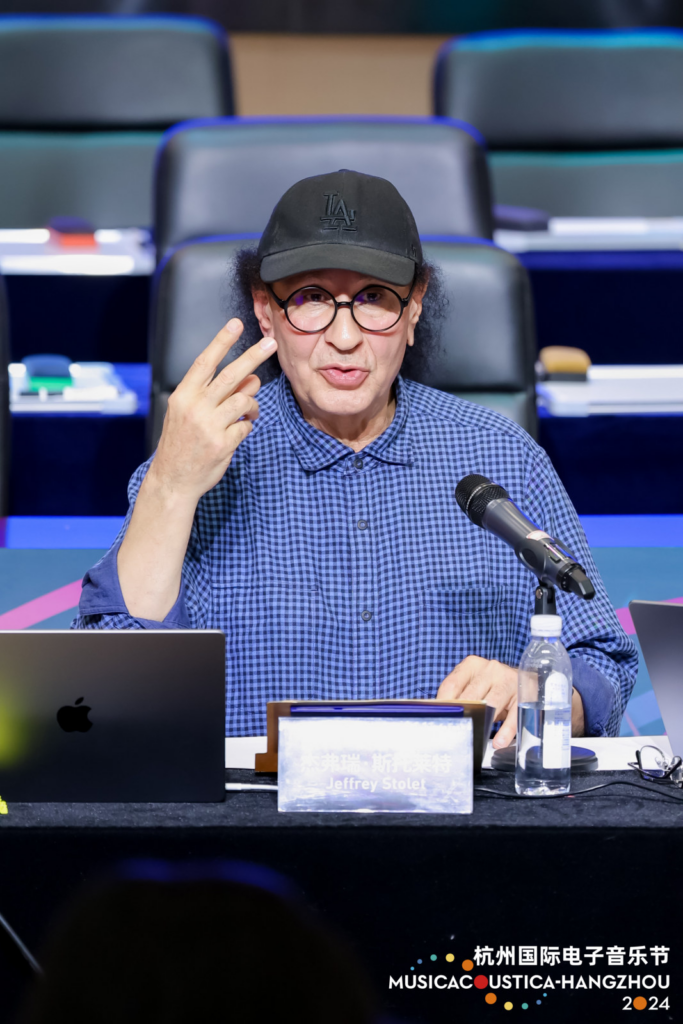They come in peace!
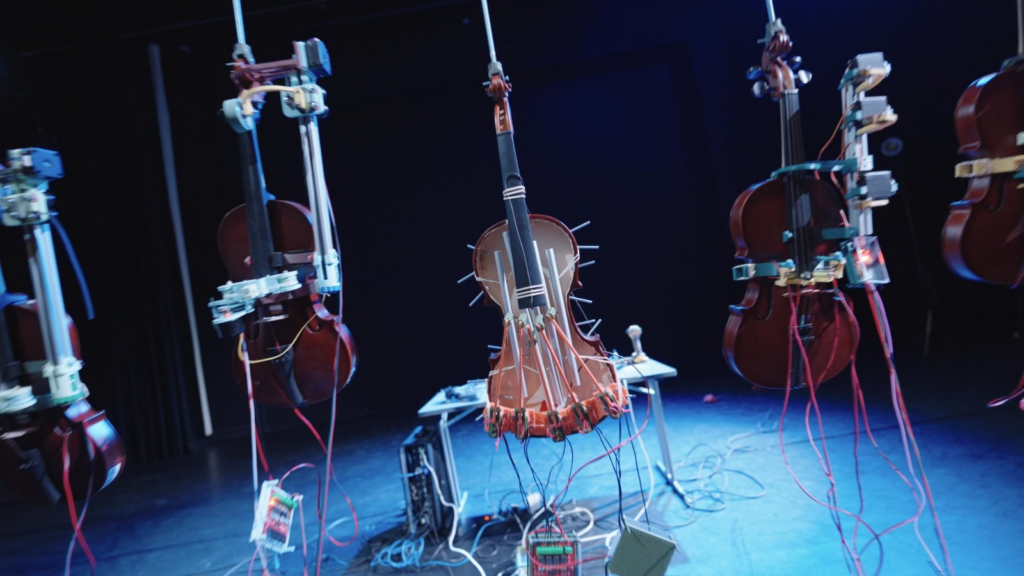
Anssi Laiho’s Teknofobia Ensemble is a live-electronics piece that combines installation and concert forms: an installation, because its sound is generated by machines; a concert piece, because it has a time-dependent structure and musical directions for performers. The premiere was 13 November 2024 at Valvesali in Oulu, Finland.
Laiho views technophobia, the fear of new technological advancements, as a subcategory of xenophobia, the fear of the unknown or of outsiders. His goal was to present both of these phobias in an absurd setting.
The composer writes that “the basic concept of technophobia — that ‘machines will replace us and make us irrelevant’— is particularly relevant today, as programs using artificial intelligence are becoming mainstream and are widely used across many industries.”
Teknofobia Ensemble poses the question: What if there were a planet inhabited by a mechanical species, and these machines came to Earth and tried to communicate with us via music? What would the music sound like, and would they first try to learn and imitate our culture in order to communicate with us?
Laiho’s aim was to reproduce the live-electronics environment he would normally work in, but to replace the human musicians with robots — not androids or simulants but “mechanical musicians”.
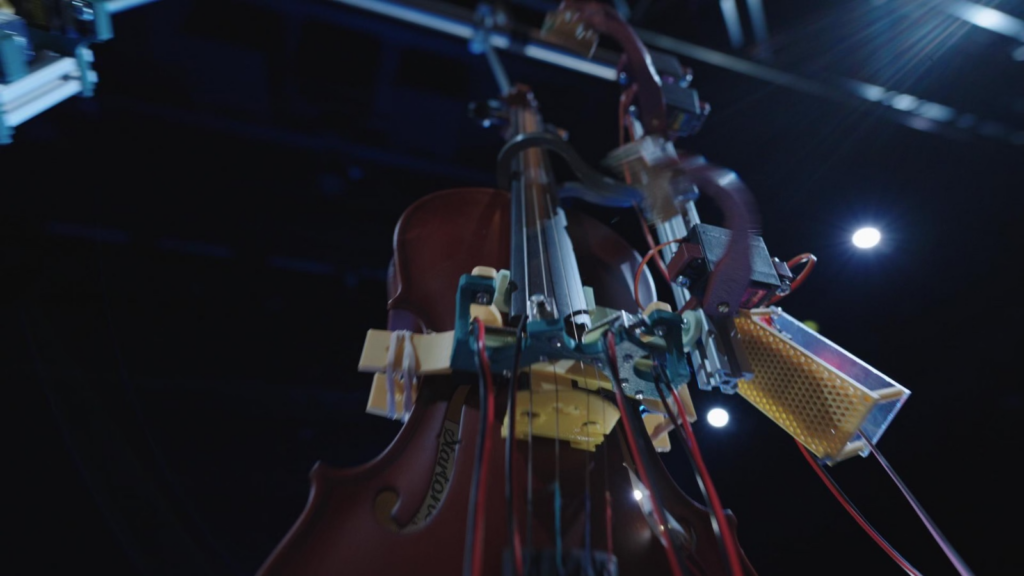
He asked himself, “What would it mean for my music and creative process if this basic assumption were to become true? As a composer living in the 2020s, do I still need musicians to perform my compositions? Wouldn’t it be easier to work with machines that always fulfill my requests? Can a mechanical musician interpret a musical piece on an emotional level, as a human being does, or does it simply apply virtuosity to the technical execution of the task?”
He then set out to prove himself wrong!
Teknofobia Ensemble consists of five prepared violins, each equipped with a Raspberry Pi that controls various types of electronic motors (solenoids, DC motors, stepper motors, and servos) through a Python program. This program converts OSC commands received from Kyma into PWM signals on the Raspberry Pi pins, which are connected to motor drivers.
In live performances, Kyma acts as the conductor for the ensemble, while Laiho views his role as primarily that of a “mixer for the band”.
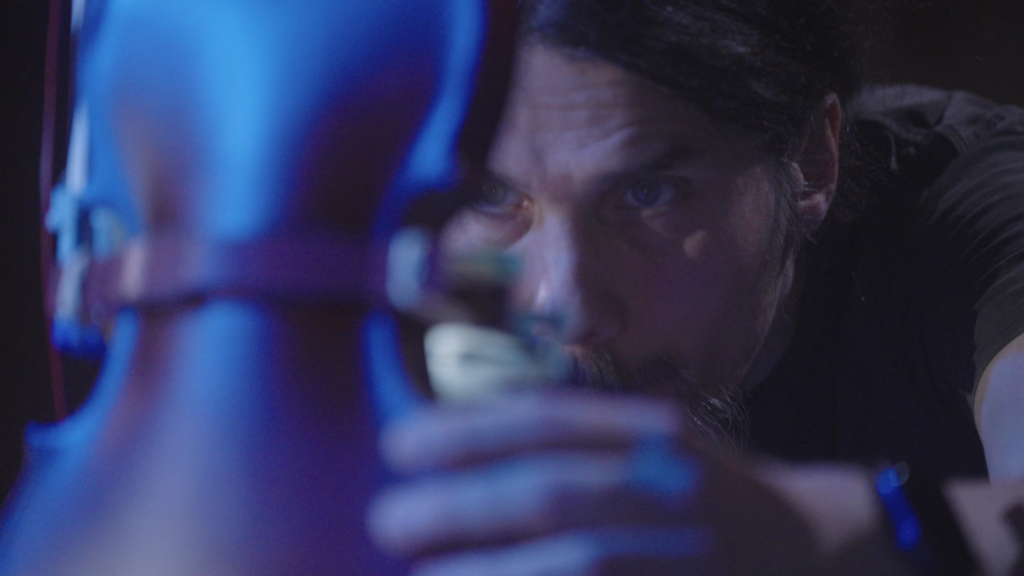
The piece is structured as a 26-minute-long Kyma timeline, consisting of OSC instructions (the musical notation of the piece) for the mechanical violins. The live sound produced by the violins is routed back to Kyma via custom-made contact microphones for live electronic processing.
